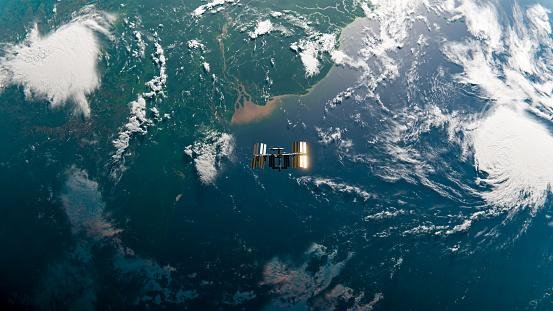The California Institute of Technology has made a groundbreaking announcement about the transmission of solar energy from space to Earth. without the need for physical connections. This achievement marks an important milestone.
The experiment is part of Caltech’s Space Solar Project. The university recently released a press release confirming the successful transfer.
The researchers used the Microwave Array for the Power Transmission Low Orbit Experiment (MAPLE), a small prototype built on the Space Solar Demonstrator (SSPD-1), which was launched into orbit in January.
A MAPLE’s emitter array effectively transmits solar energy, gathered in space, To a receiver located on the roof of Caltech’s Gordon and Betty Moore Engineering Lab in Pasadena.
Ali Hajimiri, co-director of the Space Solar Energy Project, expressed his excitement, saying, “From our experiments so far, we have confirmed that MAPLE can successfully transmit power to receivers in space.
Additionally, we were able to program the matrix to direct its energy to Earth. Although we tested it on Earth before, we now know that can withstand space travel and operate effectively there“.
The SSPD-1 attached to the Momentus Space Vigoride tug consists of two solar energy harvesting panels. Transmitter array used by MAPLE constructive and destructive attempt to transmit energy over a certain distance.
Positioned about a foot from the transmitter, the MAPLE is equipped with two receivers that collect solar energy and convert it into DC electricity. During the experiment, this electricity powered the two LEDs inside the MAPLE. By varying the transmissions between the receivers, the researchers successfully flashed one LED at a time, demonstrating the accuracy of the array.
Ali Hajimiri said, “As the internet democratizes access to information, we hope that the importance of this success is emphasized. Wireless power transmission democratizes energy access.“
The ability to wirelessly transmit solar energy from space has enormous implications for renewable energy. So much so that Japan has plans Implementing this technology by the mid-2030s. A Japanese research team aims to pilot the technology through a public-private partnership by 2025.
Source: Tec Mundo
I’m Blaine Morgan, an experienced journalist and writer with over 8 years of experience in the tech industry. My expertise lies in writing about technology news and trends, covering everything from cutting-edge gadgets to emerging software developments. I’ve written for several leading publications including Gadget Onus where I am an author.













